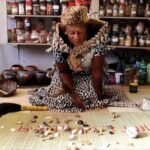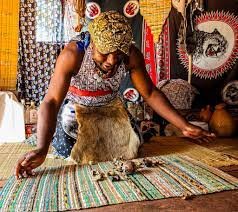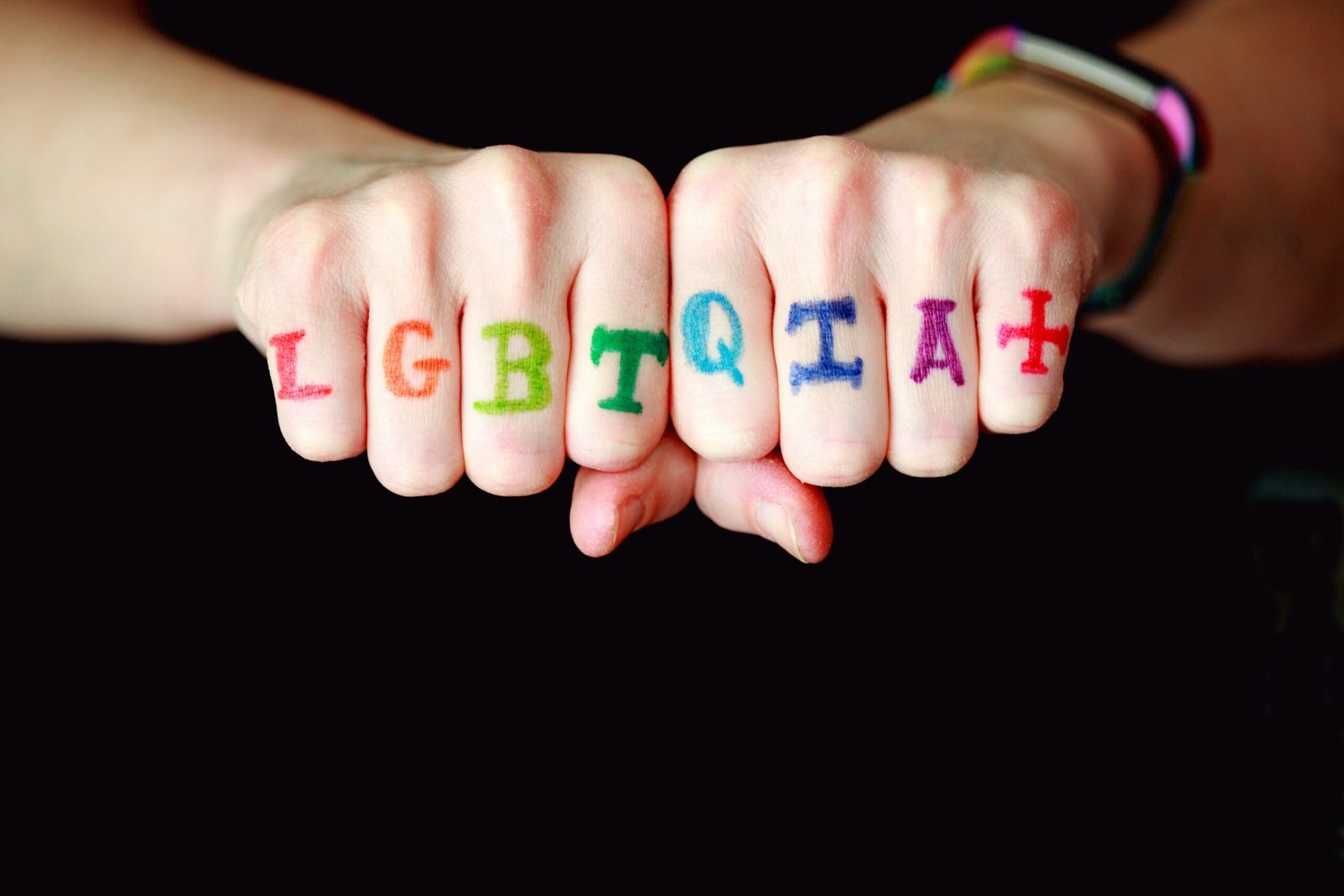Introduction to Sangomas
A sangoma is a traditional healer and spiritual advisor who plays a pivotal role within various African societies. The term “sangoma” is predominantly used in Southern Africa to describe practitioners who engage in divination and healing practices rooted in ancestral traditions. These individuals are often revered as intermediaries between the physical and spiritual realms, possessing the unique ability to communicate with ancestors and spiritual forces.
The significance of sangomas extends far beyond their healing capabilities. Historically, they have served as community leaders, cultural custodians, and advisors. Their knowledge is typically passed down through generations, ensuring that traditional practices remain integral to the social fabric of local cultures. This lineage often imbues the sangoma with spiritual authority, allowing them to not only heal ailments but also address social and psychological issues faced by community members. This multifaceted role makes sangomas essential to maintaining the cultural identity and community cohesion in many African societies.
Culturally, sangomas operate within a framework that emphasizes the interconnectedness of people, nature, and the spiritual world. Their practices encompass various techniques, including herbal medicine, rituals, and divination, all of which are intertwined with the beliefs and values prevalent in their specific cultures. Although modern influences have introduced alternative medicine systems and healing practices, the sangoma’s role as a traditional healer remains highly respected and sought after.
In conclusion, sangomas are vital components of the traditional health care system in many African communities. They embody a rich cultural heritage that celebrates the wisdom and practices of their ancestors, ensuring that traditional healing methods continue to thrive amidst the challenges of contemporary society.
The Cultural Significance of Sangomas
Sangomas play a vital role in African cultures, serving as traditional healers who are deeply embedded in the sociocultural fabric of their communities. These practitioners uphold age-old customs and traditions, acting as custodians of indigenous knowledge passed down through generations. Their unique understanding of herbal medicine, ancestral wisdom, and spiritual guidance makes them integral to societal cohesion. In many communities, sangomas are the first point of contact for individuals seeking help with health concerns, personal issues, or even spiritual dilemmas.
Their significance extends beyond mere healing; sangomas contribute immensely to the preservation of cultural heritage. Rituals, ceremonies, and community gatherings often revolve around the work of these healers, reinforcing rituals that are critical to societal identity. By performing traditional rites—which might include ceremonies for birth, marriage, and cleansing—sangomas help maintain continuity within the culture, fostering a sense of belonging and collective memory among community members. This connection to ancestry is of paramount importance in many African societies, where history is largely oral and spiritual ties are invoked through ancestral veneration.
Additionally, sangomas address community needs that transcend the individual. They often serve as mediators in disputes, offering counsel that aims to restore social harmony. Their respect within the community is reinforced by their demonstrated knowledge, ethical practices, and the spiritual guidance they provide. This allows them not only to heal but also to educate members of society about traditional practices, thus encouraging active participation in the preservation of their culture.
Ultimately, the role of sangomas is paramount in crafting a cohesive social narrative that supports both individual and collective identities. Their contributions encapsulate the essence of cultural continuity, making them a revered part of the African heritage.
The Process of Becoming a Sangoma
The journey to becoming a sangoma, a traditional healer revered in various African cultures, is a profound and often arduous experience that encompasses spiritual, practical, and emotional dimensions. It generally begins with a spiritual calling, often manifested through vivid dreams, visions, or significant life events that signal to the aspirant their destined path. This calling is considered crucial, as it indicates the individual’s inherent connection to ancestral spirits and the healer’s role within the community.
Once an individual acknowledges this calling, the journey into sangoma training officially begins. This phase, known as initiation, involves several rites that vary across different cultures and regions. Typically, prospective sangomas enter into mentorship under an experienced healer or elder in their community. This apprenticeship is essential, providing the candidate with vital knowledge about herbal medicine, ritual practices, and spiritual guidance. Throughout this training, the apprentice must demonstrate commitment and understanding of the responsibilities that accompany the title of sangoma.
However, the path is not devoid of challenges. Aspirants often face rigorous tests that assess their resilience and dedication. These can include physical and mental trials designed to prepare them for the demanding nature of their future roles. Additionally, candidates may experience moments of doubt and spiritual struggle, which, while daunting, are integral to their growth and understanding of traditional healing principles.
The transition to becoming a sangoma is thus portrayed not just as a method of acquiring knowledge but also as a transformative experience that shapes the individual’s identity and purpose. It encapsulates a deep commitment to both personal growth and serving the community, with successful aspirants gaining recognition and respect as powerful and empathetic healers.
Practices and Rituals of Sangomas
Sangomas, as traditional healers deeply rooted within African cultures, engage in a variety of practices and rituals that are essential to their role. Central to their work is the practice of divination, which serves as a conduit for communicating with ancestral spirits. Utilizing a range of methods, including throwing bones, interpreting cowrie shells, or reading the patterns formed by the elements of nature, sangomas seek insight into both physical and spiritual ailments. These divination techniques not only inform diagnoses but also guide treatment methodologies, thus reinforcing the interconnectedness of mind, body, and spirit in African healing traditions.
In conjunction with divination, herbal medicine preparation is a hallmark of sangoma practice. Sangomas possess extensive knowledge of indigenous plants and their therapeutic properties. They often harvest herbs, roots, and barks, preparing them in various forms such as teas, tinctures, poultices, or smudges. These preparations are tailored to the individual’s specific needs, addressing ailments that range from physical maladies to emotional distress. This holistic approach emphasizes the sangoma’s role not just as a healer, but as a custodian of cultural wisdom regarding the natural world and its medicinal offerings.
Rituals for healing and protection play a significant role in the practice of sangomas. These ceremonies frequently involve music, dance, and communal participation, creating an environment that fosters healing energies and spiritual alignment. Offerings may be made to appease or seek favor from ancestors, reinforcing the belief in their active role in individuals’ lives. Each ritual is imbued with symbolism that reflects the deep cultural heritage of African societies, highlighting the sangoma’s integral function in their communities. This confluence of practices and rituals underscores the sangoma’s unique identity as both healer and cultural bearer, making their role indispensable in fostering well-being and continuity within their societies.
Sangomas and Healing: A Holistic Approach
Sangomas, traditional healers renowned in various African cultures, employ a holistic approach to health and healing that embodies the interconnectedness of physical, emotional, and spiritual well-being. This methodology acknowledges that an individual’s health cannot be viewed in isolation; instead, it recognizes the complex web that links one’s mind, body, and spirit. This perspective is crucial in understanding how sangomas diagnose and treat ailments, employing a blend of traditional knowledge and spiritual insights.
The physical aspect of health is addressed through various means, including herbal remedies and manual therapies that are deeply rooted in ancestral knowledge. Sangomas utilize a wide array of plants and minerals, believing that each ingredient possesses specific healing properties that can restore balance to the body. By treating the symptoms through natural resources, they not only aim to alleviate physical discomfort but also promote overall physical health.
On the emotional level, sangomas often engage in counseling and spiritual guidance, helping individuals navigate life’s challenges, such as grief, trauma, and stress. The emotional state is considered equally vital, with the belief that unresolved emotions can manifest as physical ailments. By fostering emotional healing, sangomas facilitate the smoother flow of energy within the body, thereby enhancing resilience and overall health.
Finally, the spiritual dimension is an integral part of the holistic approach employed by sangomas. They often communicate with ancestors and spiritual entities, which they believe provide guidance and insight into the underlying causes of illness. Rituals, prayers, and offerings play a significant role in this spiritual healing process, serving to strengthen the individual’s connection to their ancestors and cultural heritage.
Through this comprehensive understanding of health, sangomas provide an invaluable service, emphasizing the need for balance amidst the layers of human existence. By treating not just the symptoms but the person as a whole, they contribute significantly to the well-being of their communities.
Contemporary Role of Sangomas
In the ever-evolving landscape of modern society, the role of sangomas, or traditional healers, remains significant. While rooted in the ancient practices of African cultures, sangomas have adeptly navigated the complexities of contemporary urban environments. In cities across Africa, sangomas continue to play a vital role in the communities they serve, offering not only healing practices but also guidance in social and familial matters.
The relevance of sangomas has become increasingly pronounced as urbanization progresses. Many individuals, while living in fast-paced city settings, still seek the wisdom and care of these traditional healers. They provide a culturally responsive alternative to Western medicine, often appealing to those who may feel disillusioned by conventional healthcare systems or who seek holistic treatments that align more closely with their cultural beliefs. This has led to a growing recognition of the importance of integrating traditional healing practices with modern medical care.
Furthermore, sangomas are increasingly acknowledged for their ability to adapt and modernize their practices. Many have embraced new technologies, using social media and mobile applications to reach a broader audience, thus maintaining their relevance in contemporary society. This has fostered a transformation in perceptions; sangomas are often viewed not just as healers of the body and spirit, but also as community leaders and advisers on issues ranging from economic challenges to relationships.
As sangomas continue to coexist with Western medical practitioners, there is a growing acknowledgment of the importance of collaboration between these two forms of care. This is particularly relevant in discussions surrounding mental health, where sangomas often provide support and healing approaches that complement psychiatric care. By working together, traditional and modern practitioners can enrich the health landscape, offering more comprehensive care to individuals.
Challenges Faced by Sangomas Today
Sangomas, as traditional healers within the African cultural context, have long played a critical role in the spiritual and physical wellness of their communities. However, contemporary sangomas face several challenges that threaten their practice and societal perception. One of the most significant obstacles is skepticism from the medical community. The rise of modern medicine has led to a dichotomy between traditional healing methods and scientific approaches to health care. Many medical professionals question the efficacy of sangomas and traditional practices, often dismissing them as unscientific. This skepticism can marginalize sangomas, making it difficult for them to coexist with formal healthcare systems and cutting off potential collaborations.
Legal issues also pose a challenge for sangomas in modern society. In several countries, there is little to no legal recognition of traditional healers, which can lead to complications in their practice. Sangomas may find themselves under scrutiny from health regulatory bodies that do not acknowledge the legitimacy of their work. This lack of recognition can also result in legal repercussions for practicing without a formal license, which further complicates their ability to offer services. Moreover, as globalization continues to spread, traditional healing practices are at risk of being overshadowed by Western medicine and healthcare practices, which are often promoted as superior. The infusion of global health trends can diminish the relevance of sangomas, leading to a decline in their practice as they struggle to compete with modern medical solutions.
Additionally, the rapid changes brought by globalization can dilute the cultural significance of traditional healing, impacting community trust and reliance on sangomas. With the younger generation increasingly influenced by modern ideologies, traditional healing methods may be perceived as outdated or less valid. Such societal shifts can create an identity crisis for sangomas, who must navigate the changing perceptions while striving to retain their cultural heritage and communal relevance.
The Impact of Technology on Sangoma Practices
The intersection of technology and traditional healing practices has become increasingly relevant in the lives of sangomas, or traditional healers, in African cultures. As the digital landscape evolves, many sangomas are adapting their methods to supplement their ancient practices with modern technology. This transformation can be seen in various aspects of their work, including communication, resource access, and community outreach.
One significant way that technology has influenced sangoma practices is through the use of mobile phones and social media platforms. These tools allow sangomas to connect with clients beyond geographical confines, providing guidance, support, and healing services remotely. This ability to maintain contact with clients has broadened their reach, enabling sangomas to serve urban populations and individuals who may be unable to visit them physically. Enhancing communication also fosters a sense of community, providing a platform for exchanging knowledge and experiences among healers.
Moreover, technology facilitates access to an array of resources that were previously difficult for traditional healers to obtain. Online databases and forums offer information on medicinal plants, wellness practices, and holistic healing techniques. This access encourages sangomas to integrate new, evidence-based practices into their traditional knowledge base, enhancing the effectiveness of their healing work. However, while technology can augment traditional practices, it can also introduce certain challenges. The rapid dissemination of information may lead to the misrepresentation of traditional healing methods, the commodification of cultural practices, and potential conflicts between modern and indigenous healing paradigms.
In conclusion, the integration of technology within sangoma practices presents a complex dynamic that can offer both benefits and drawbacks. Through thoughtful adaptation, traditional healers can enhance their approaches, fostering a broader understanding and appreciation for their roles in contemporary society while still honoring their cultural heritage. The ongoing evolution of technology and its influence on traditional healing will remain a crucial area of exploration for future generations.
Conclusion: The Future of Sangomas
The role of sangomas, traditional healers deeply rooted in African cultures, has been examined through various facets, showcasing their importance in the spiritual and physical well-being of their communities. Sangomas have historically served as the custodians of indigenous knowledge and practices, often acting as intermediaries between the spiritual world and their patients. Their healing methodologies, which include herbal remedies, spiritual counseling, and divination, continue to resonate with many individuals seeking alternatives to conventional medicine. As African societies progress and face modern challenges, the future of sangomas appears resilient yet evolving.
There is an increasing recognition of the importance of integrating traditional healing practices with modern healthcare systems. This synergy could pave the way for comprehensive healthcare models that respect and incorporate cultural beliefs while providing holistic solutions to health issues. As globalization and modernity influence African communities, sangomas have the opportunity to adapt and respond to contemporary challenges, ensuring their relevance in health promotion and wellness.
Moreover, the rise of interest in mental health and wellness creates a broader platform for sangomas to advocate for social cohesion and emotional healing. Their unique understanding of communal needs and individual experiences positions them as valuable contributors to a more inclusive healthcare approach. Additionally, the growing dialogue around cultural preservation offers sangomas a chance to showcase their knowledge on larger stages, reaffirming their value in contemporary society.
In summary, the future of sangomas is not defined solely by the preservation of tradition but is a dynamic interplay between cultural practice and modernity. By continuing to serve their communities while embracing change, sangomas can play an essential role in fostering well-being and addressing health disparities, ensuring their enduring legacy is one of adaptation and resilience in an ever-changing world.










